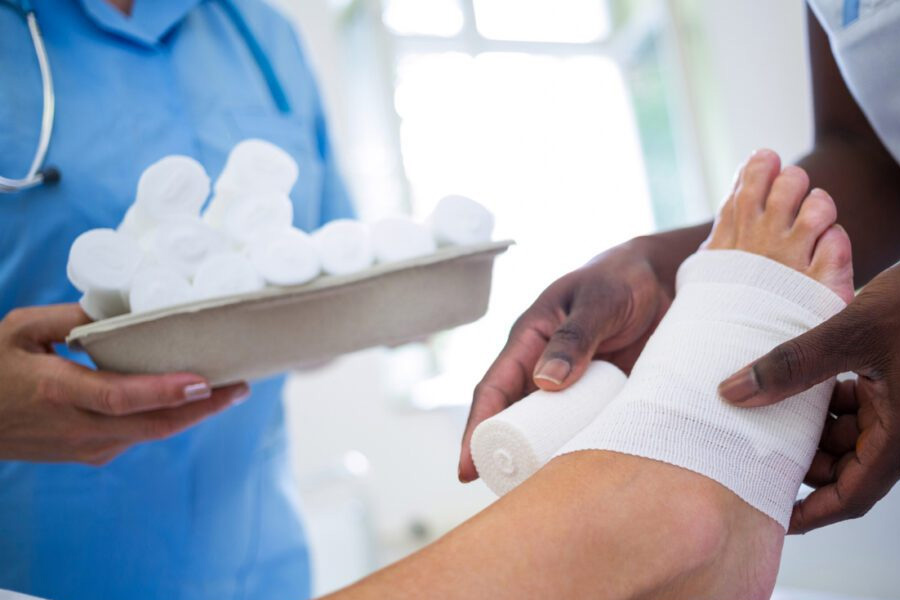You may have pain in the back of your lower leg, and right above your heel, due to an injury to your Achilles tendon. This is the tendon that connects your calf muscle to your heel bone. If you have pain, this tendon may be overstretched or torn.
Wearing unsupportive shoes may trigger Achilles tendon pain. If you have high blood pressure (hypertension) or psoriasis, you’re also at a higher risk of developing Achilles pain.
An experienced foot doctor will be able to quickly diagnose and treat the problem. Let’s talk about how this type of leg pain is diagnosed and treated, and where you can go for an efficient evaluation.
How Is Achilles Pain Diagnosed?
The diagnosis process is relatively simple and may consist of three main aspects, including your medical history report, physical exam, and imaging:
Medical History Review
You will likely first be asked to fill out a medical history report, which includes information such as if you have arthritis or if you have ever had a broken ankle or surgery on your ankle.
Examination
Next, your foot and ankle specialist will examine the area to see whether you have any visible signs of swelling or other issues. The physician will then want to see how much you can move your ankle, and they will assess your ankle’s total range of motion and flexibility. The doctor may also ask you to walk so that they can evaluate whether your issue is interfering with mobility, such as if it is causing a limp.
Testing
Your foot doctor may order further testing, such as X-rays, an ultrasound, or an MRI (magnetic resonance imaging). Ultrasound and MRI scans do not expose you to any radiation.
Treatment for Achilles Tendon Pain
The treatment for your Achilles tendon issue will largely depend on the severity of it:
At-Home Treatments
Your foot surgeon may recommend simple ways to control your pain at home while your injury heals, such as taking pain relievers, applying an ice pack to the area to minimize swelling, and later applying heat to foster blood flow and to relax the area.
Typically, ice is more beneficial when you first injure your Achilles tendon, because the cold temperature numbs the area and constricts your blood vessels. This helps with inflammation as well. Heat therapy is better for treating the injury after the swelling has gone down or if you have a chronic issue. Compression and elevation of the area may also help to reduce swelling.
Custom Orthotics
Your treatment may also include custom-made orthotics, which will reduce pressure on your tendon while also supporting your feet.
Surgery
If conservative measures aren’t effective, you may need to have surgery to repair the Achilles tendon. This is especially true if the tendon was torn all the way through, so the doctor may suture the tendon back together or apply other methods.
Foot Doctor for Achilles Tendon Pain in Fairfield, Ohio
Here at Cincinnati Foot & Ankle, we have convenient locations across the Cincinnati area – including Fairfield, Milford, Harrison, and Springdale. Our medical team will take all the necessary steps to help you heal as quickly as possible and with the most least-invasive approach.
If you have any questions or would like to schedule an appointment, call our location near you in southwest Ohio or fill out our appointment request form online now. We look forward to seeing you!





